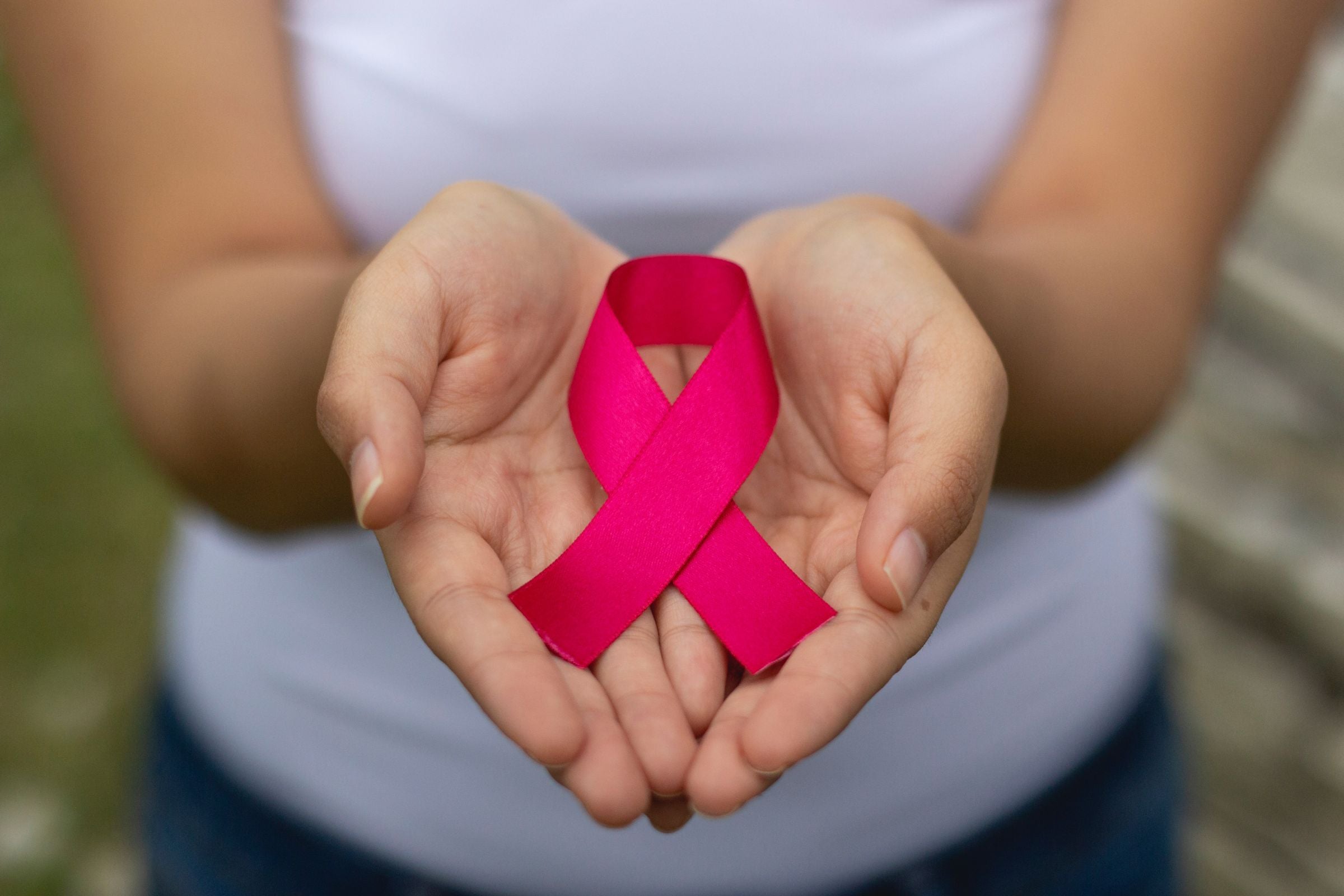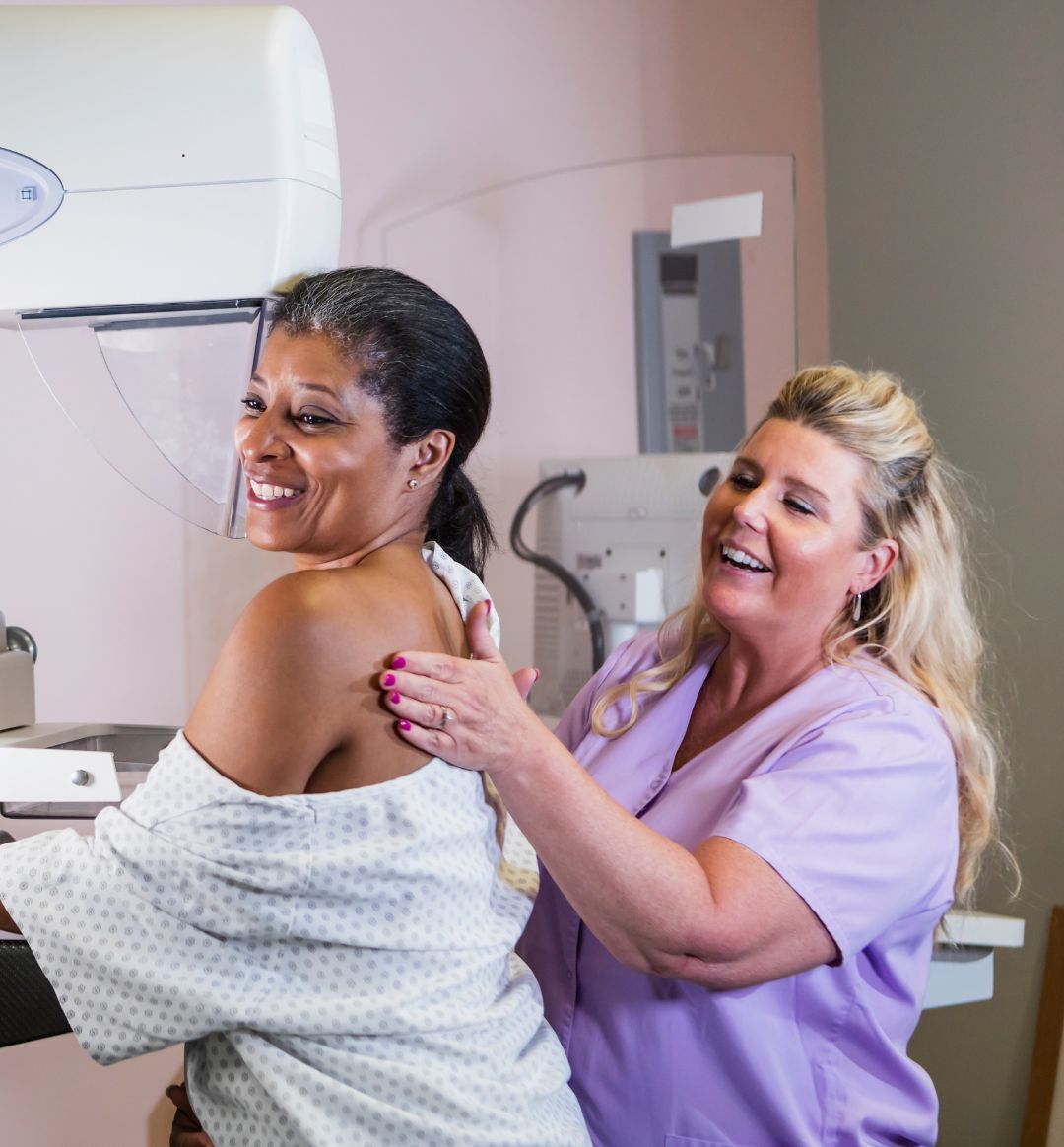Part 1 of our Breast Cancer Awareness series shines a light on the main causes of breast cancer and how you can protect yourself.
Written by: 100% PURE®
It's officially October: the month of tricks, treats, and delicious pumpkin spice drinks!
But aside from being Spooky Season, October is Breast Cancer Awareness Month, and it's the perfect time to receive a discounted (or free) screening for breast cancer from your healthcare provider.
Understandably, a breast cancer screening can be a scary thing–especially if it's your first time or if you haven't done one in a while. But breast cancer screenings are something that everyone should take advantage of because prevention is the key to stopping it.
In this special series, we're going to discuss the importance of breast cancer awareness–starting with its main causes.
Breast cancer is a disease that occurs when cancerous cells develop in the breast. Eventually, these cells can start to grow, taking over healthy tissue in the breast and, over time, they can make their way throughout the body by way of blood or lymphatic vessels.
When cancerous cells enter the rest of the body, they can start to damage other tissues–this is what's known as metastasis.
Breast cancer is a disease that affects 1 out of 8 women, and it's the leading cause of death among women globally, with 50% of cases affecting women over the age of 60.
While there is no cure to breast cancer, it can be treated with methods such as chemotherapy and mastectomy. Because cancer spreads over time, it's important to detect it as soon as possible, which is why breast cancer awareness is crucial.

Generally speaking, aging is the leading cause of breast cancer in women. This is because the longer we live, the higher the likelihood of being exposed to mutations in the body. Moreover, our bodies become less resilient to genetic damage over time, and the repair process begins to slow.
According to the American Cancer Society, about 80% of breast cancer cases throughout the world occur in women over the age of 50. What's more: 2 out of every 3 invasive breast cancers occur in women over the age of 55.
Because of this, it's crucial that we become more vigilant about breast cancer as we age. That's why it's recommended that women start receiving annual mammograms after they turn 40.
When it comes to stopping breast cancer, prevention truly is our first line of defense.
Besides receiving regular screenings, it helps to understand some of the major causes of breast cancer.
First, let's begin with some of the causes that lie beyond our control. While these causes might be frustrating (you can't change your genetics), it can better inform your awareness.
Certain Treatments and Drugs
Certain treatments and drugs have been indicated to increase the risk
of breast cancer in women. According to the
CDC, women who underwent radiation therapy to the chest before turning
30 have a higher risk of acquiring breast cancer later on in life.
Additionally, women who have been exposed to certain drugs, like diethylstilbestrol (DES), tend to have a higher risk of developing breast cancer.
Dense Breast Tissue
When breasts are on the denser side, this typically means that they
have a higher composition of connective tissue than fatty tissue. When
there is more connective tissue in the breasts, it's sometimes harder
for mammograms to detect tumors, which increases the risk of
developing breast cancer.
Personal History
Personal history plays a major role in the development of breast
cancer–particularly for women with certain non-cancerous breast
diseases. For women who have had breast cancer in the past, developing
breast cancer a second time is far more likely.
Additionally, some non-cancerous breast diseases, like atypical hyperplasia, are associated with a higher risk of getting breast cancer, while reproductive history plays a role, as well. Menstruating before age 12 and beginning menopause after age 55 expose women to hormones longer, raising their risk of getting breast cancer.
Family History
Family history has been shown to have especially strong ties to breast
cancer. Women who have a mother, sister, or daughter with breast
cancer have a higher risk of developing breast cancer themselves.
Genetic Mutation
Genetic mutation is one of the leading causes of breast cancer in
women worldwide. In particular, women who have inherited changes to
the
BRCA1 and BRCA2
genes have a higher risk of developing breast and ovarian cancer.

Now that we've established some of the leading causes of breast cancer beyond our control, let's talk about some of the causes we can manage in our daily lives.
Activity Levels
It's been found that those with a sedentary lifestyle are more likely
to develop breast cancer. According to the
National Cancer Institute, it was concluded in one 2016 analysis that the most physically
active women had a 12–21% lower risk of breast cancer than those who
were the least physically active.
Body Weight
According to the
CDC, women who are overweight or obese after menopause have a higher
risk of developing breast cancer than those who keep a healthy weight.
Women can maintain a healthy weight through a balanced diet, regular
physical activity, and managed stress levels.
Alcohol & Smoking
Studies have indicated that the risk for developing breast cancer in
women can increase with
alcohol intake.
It's also been suggested that smoking can change hormone levels, which can increase one’s breast cancer risk.
Similar to how we've ignored the environment as a cause of breast cancer, social inequity is a major factor that almost everyone ignores.
Consequently, we tend to ignore the issues that lie beneath social inequities, such as racial, economic, and political injustices.
Our environment is directly linked to where we live and work; as a result, marginalized communities tend to bear the brunt of this, whether they live in urban or rural areas. According to the American Cancer Society, black women are more likely to die from breast cancer than white women nationwide, even though they are statistically less likely to develop it.
These impacts are even more detrimental to low-income women, who are at a greater exposure to both environmental stress and toxins.
On top of that, low-income women have less access to quality healthcare and healthy, whole foods. What's more, we have a limited understanding of the ways in which breast cancer affects different ethnicities and income levels.
While a healthy lifestyle can have positive implications against the causes of breast cancer, this fails to address the fact that not all women have the option to make healthy choices.
When we focus on diet and exercise as defenses against breast cancer, we forget about the social justices in the United States, and how they impact access to a healthy lifestyle for so many women who live here.
If we're going to discuss the root causes of breast cancer, it's crucial that we pursue the underlying systemic changes in order to fight it.
- Tags: October-2022, Wellness
We carefully hand-select products based on strict purity standards, and only recommend products we feel meet this criteria. 100% PURE™ may earn a small commission for products purchased through affiliate links.
The information in this article is for educational use, and not intended to substitute professional medical advice, diagnosis, or treatment and should not be used as such.

